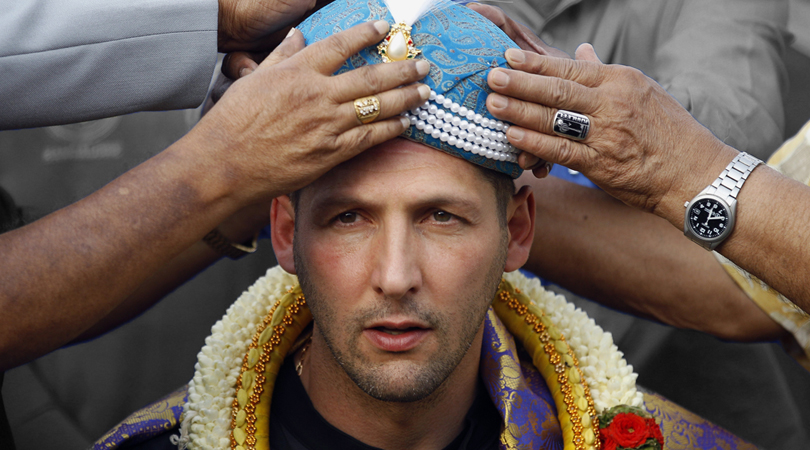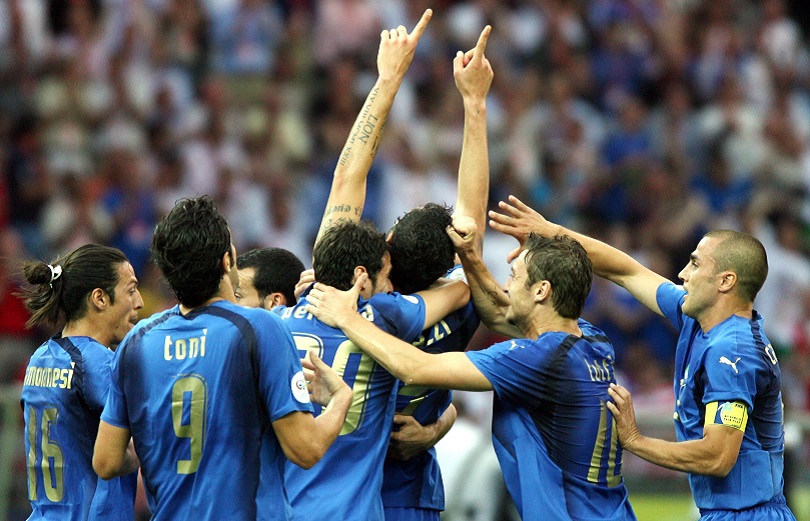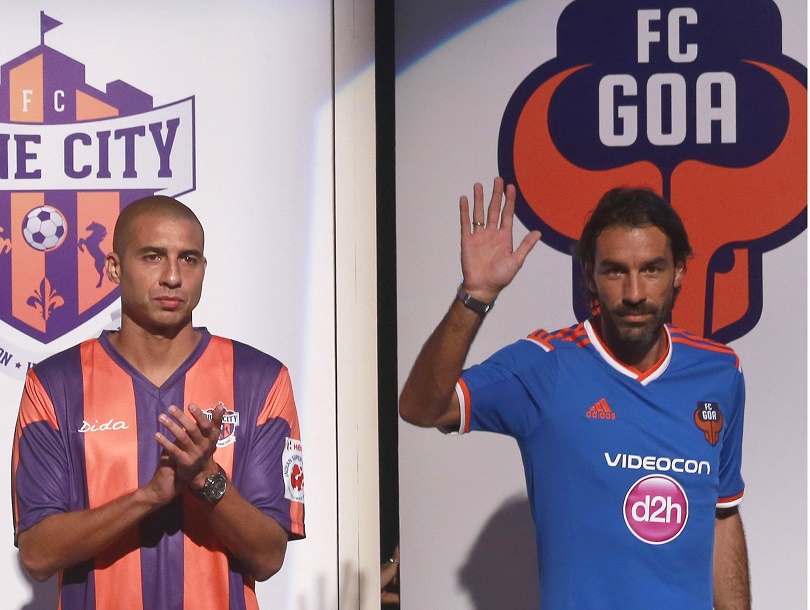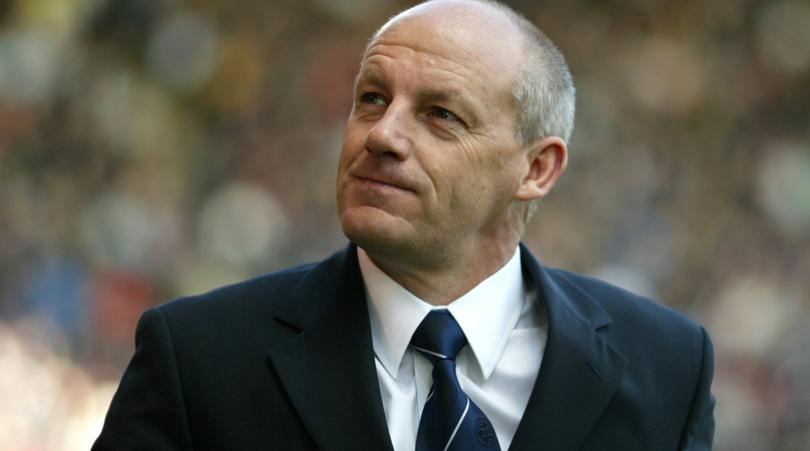Zico vs Materazzi: India’s ding-dong rivalry featuring arrest, match-fixing calls and one giant fine
A thrilling head-to-head record? Check. Media grumblings? Check. Final-day controversy and an incredible comeback? Oh, check. Let Akarsh Sharma fill you in on the story so far…

Even in India, a developing entity on the footballing landscape, the iconic Brazil-Italy rivalry has manifested itself in a fascinating manner.
Across two seasons of the Indian Super League, Brazilian great Zico and Italian World Cup winner Marco Materazzi – the latter notorious for his use of the dark arts as a player, and who took his managerial bow in India – have engaged in a series of enthralling battles as managers of FC Goa and Chennaiyin FC respectively.

Well-brewed rivalry
Much of the credit for this transformation goes to Materazzi’s shrewd (and often dirty) tactics which have forced Zico’s hand and altered the Brazilian’s previously unwavering focus on attack-minded football
What began in 2014 as a clash of ideologies – romanticist Zico versus pragmatist Materazzi – has gradually ascended to tit-for-tat skirmishes of shared beliefs.
In their first meeting at the beginning of ISL-1, for instance, the Italian deployed five defenders and a defensive midfielder to counter Zico’s side. By the time of their fourth clash, in the latter stages of ISL-2, it was Zico who, quite inconceivably, used the same system.
Much of the credit for this transformation goes to Materazzi’s shrewd (and often dirty) tactics which have forced Zico’s hand and altered the Brazilian’s previously unwavering focus on attack-minded football.
On Thursday, the duo will meet again in Chennai for their first clash of ISL-3. It’s also their first meeting since an ill-tempered ISL-2 final in Goa which saw Chennaiyin snatch the title away from FC Goa with goals in the 90th and 91st minutes. The head-to-head record stands at 3-2 to Materazzi, and all wins have been achieved by the away side.
The best features, fun and footballing quizzes, straight to your inbox every week.
Necessary scrap
Materazzi’s men triumphed 2-1 on the night via an Elano free-kick, but not before their six-strong defensive unit had roughed up the Goan players with persistent fouling and time-wasting tactics
Such rivalries have given meaning to the ISL’s otherwise-contrived existence since 2014. Zico and Materazzi are among the three longest-serving managers in the ISL and the only two to have returned to the same club for a third consecutive season.
As fate would have it, they began their ISL journeys against one another: FC Goa and Chennaiyin faced off in the clubs’ maiden competitive match. Materazzi’s men triumphed 2-1 on the night via an Elano free-kick, but not before their six-strong defensive unit had roughed up the Goan players with persistent fouling and time-wasting tactics. One player who came in for special attention was midfielder Robert Pires, Goa’s marquee player (each ISL club is required to sign one such world-renowned footballer) – and neither Zico nor his players took kindly to Chennaiyin’s crude approach.

“Our team played football; they did not,” huffed Clifford Miranda, FC Goa’s veteran Indian midfielder. “Pires has played in England before,” Materazzi responded. “This is football and it will be physical.”
A feisty return leg in Chennai saw an injury-plagued Chennaiyin go down 3-1, though the hosts had little to play for having already qualified for the semi-finals. Zico’s men made it to the semis on the back of that win, but any hopes of another showdown in the final were dashed when both clubs fell in the final four.
Turning point
At the time, it was easily the most one-sided contest in the short history of the ISL, and it would have a profoundly negative impact on the Brazilian's approach to future matches
By the end of the first season, the two teams were a reflection of their managers’ philosophies. Materazzi’s team would play the most devastating attacking football in patches, but weren’t afraid to win ugly when required. Chennaiyin topped the league using this approach, a place above FC Goa.
Zico’s unit, meanwhile, offered the most sumptuous passing football seen in the ISL's existence and stuck to it during tougher times. FC Goa won only one of their opening seven matches during a phase of learning, but then went undefeated in the next seven, before losing to eventual champions Atletico de Kolkata on penalties.
When the two teams first met in ISL-2, Chennaiyin shredded the form book. Zico’s team had earned four points out of a possible six, while Materazzi’s men had flown to Goa on the back of two dismal defeats. However, in what proved to be a landmark result for Materazzi and a watershed moment for Zico, the Italian’s tactical masterclass helped humiliate the hosts 4-0. At the time, it was easily the most one-sided contest in the short history of the ISL, and it would have a profoundly negative impact on the Brazilian's approach to future matches.
Pires has played in England before. This is football and it will be physical
To counter Zico’s free-flowing 4-2-3-1 system that thrived on its two Indian wingers, Romeo Fernandes and Mandar Rao Dessai, Materazzi had made shrewd changes to his line-up and switched from a diamond (which he used in the two defeats) to a flat midfield four. He also set his team out to play on the counter-attack in the hope of utilising the pace of Elano (Chennaiyin’s marquee player) and Stiven Mendoza (the team’s star centre-forward) against Lucio and Gregory Arnolin (FC Goa’s slow centre-backs).
The results were emphatic. Elano and hat-trick grabber Mendoza ran riot at the Jawaharlal Nehru Stadium in Fatorda. The two Indian wingers barely got a look in, while Lucio and Arnolin – playing their third game in eight days as part of an unchanged starting XI – were desperately exposed through the middle.
“[Chennaiyin] was better prepared and they practically destroyed us,” lamented Zico, before acknowledging the defeat as the worst of his career: “In my 16 years of (coaching), I have never lost a match 4-0.” (Technically true: though he did lose one 6-0, as manager of Iran against Brazil in October 2012.)
Getting ugly
In the 14 matches since that 4-0 defeat, Fernandes and Dessai, previously the lynchpins of FC Goa’s offensive play, have started together only four times – and never again as out-and-out wingers
More than the loss of three points, this defeat would have far-reaching consequences for Zico’s tactics as he completely abandoned the 4-2-3-1 system which had served him so well. Zico, incidentally, was part of the great Brazil team that famously lost to Italy in the 1982 World Cup, a match said to have had a long-term impact on Brazil's carefree footballing culture.
First, the Brazilian manager removed his two widemen from the starting XI and adopted a compact diamond midfield, thereby compromising on his team’s fluidity in favour of protecting the back four. He reintroduced the duo later, but only as wingbacks in a safer 3-5-2 setup. In the 14 matches since that 4-0 defeat, Fernandes and Dessai, previously the lynchpins of FC Goa’s offensive play, have started together only four times – and never again as out-and-out wingers.
Although Zico’s men avenged their big defeat in the Chennai leg, there was very little to admire about the manner in which they did so. In what was a complete departure from the Ziconian way of playing, FC Goa took to the field with five defenders and a defensive midfielder.
“We lost the last game 4-0,” the Brazilian later explained. “We had to be humble enough to recognise their strengths and make amends.”

An ugly affair ensued, with one red card, seven yellows and 18 fouls apiece. Only two penalties separated the sides. This game, in fact, ranks fourth in the ISL's dirtiest matches of all time (unsurprisingly, Chennaiyin feature four times in the top six).
Another Materazzi triumph
In the aftermath, FC Goa’s owners had Elano arrested on grounds of assault (which could never be proven)
Both teams won their semi-finals this time around to set up a mouth-watering title showdown in Goa – a pre-decided venue for the final.
Not unexpectedly, Materazzi’s men riled their opponents from the start through aggressive fouling and playacting. Not unexpectedly, it outraged the Goan camp and helped disrupt the rhythm of a starting XI that destroyed the Roberto Carlos-led Delhi Dynamos in the semi-final.
Zico’s men, though, rallied from a goal down to lead 2-1 heading into the last minute of regulation time. But Chennaiyin scored twice inside three minutes and snatched the trophy away from the home team. Somehow, Materazzi had once again had the final laugh, which was a bitter blow to Zico and his side.
In the aftermath, FC Goa’s owners had Elano arrested on grounds of assault (which could never be proven). The entire Goan contingent boycotted the closing ceremony in protest at the alleged incident, and one of the owners cried match-fixing in a moment of particular despair. All of this resulted in a lengthy disciplinary case which resulted in the owners being ousted, and FC Goa fined ₹6 crore (approx. £820,000) in July this year.
Elano gets involved in a post-match scuffle
Round six

Interview: Steve Coppell on India, Tendulkar and the future of English coaching
FourFourTwo's 59 Best Under-21 Wonderkids in the World
Is Wayne Rooney past his peak? 5 players who adapted their game and regained their form
Thursday’s encounter pits two winless teams against one another after two rounds of games. They’re both missing key players from last season and look suitably disjointed on the pitch. Materazzi no longer has Elano (now at Santos) or Mendoza (NYCFC) in his squad, two men who played a major part in creating their fear factor for two seasons. Zico, meanwhile, can no longer call upon the services of Brazilians Leo Moura, the team's best player last season who is now at Santa Cruz, and his midfield partner Jonatan Lucca (Pune City, via Kelantan in Malaysia).
At least the two managers are still with their clubs – and in previous seasons, both have found solutions to slow starts.
Zico and Materazzi’s rivalry is a purely footballing one that’s devoid of any personal enmity – an exception to the fabricated nature of most things in the ISL. Here, there’s no snubbing of handshakes or gouging of eyes. Grunted words of post-match disapproval, maybe, but these two have come to respect each other’s managerial acumen – and India's football lovers have come to respect them for it.
